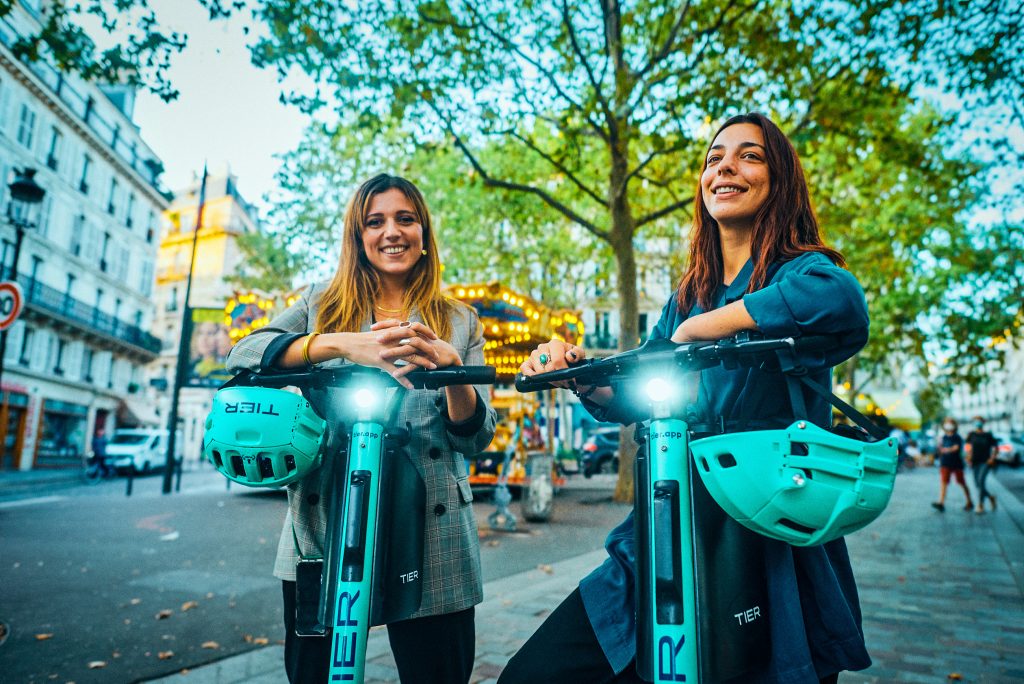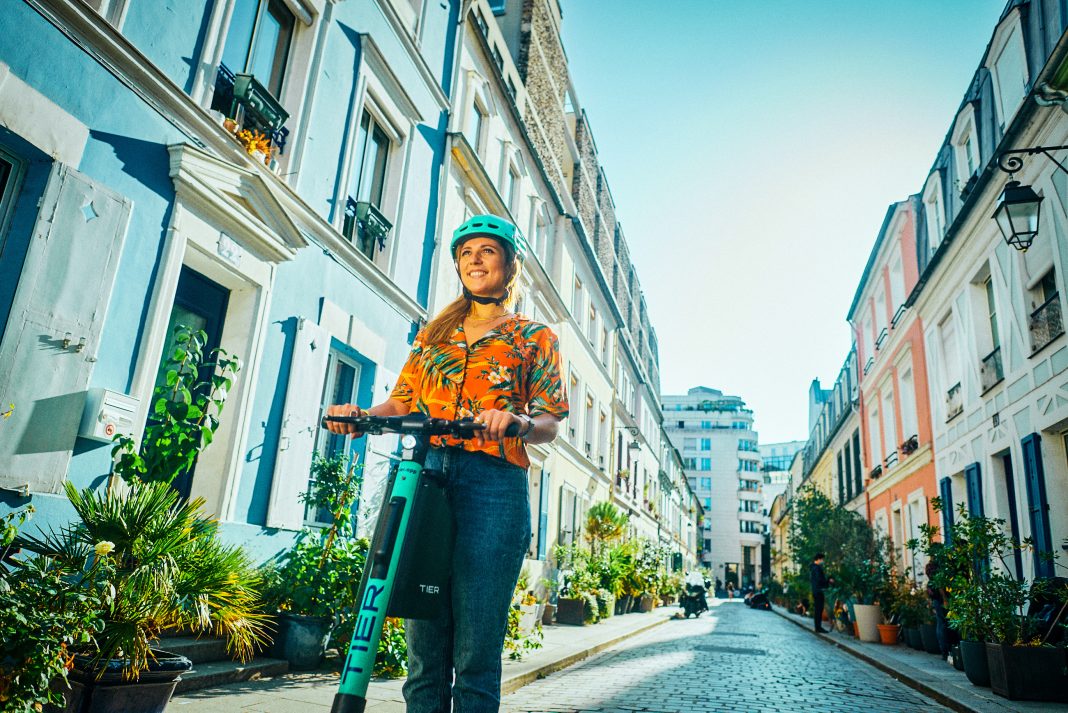They endanger pedestrians, they are annoying, and people throw them away like garbage: E-scooters. Many citizens, especially pedestrians and cyclists, do not care for them. But let’s be clear: the potential of e-scooters is high, and we need to find a way to include them safely into our city’s infrastructure. Here’s how.
E-scooters conquered the streets of cities worldwide like a thunderstorm. In 2017, e-scooter rental scheme operations started to launch in a few Californian cities. By 2019, one e-scooter rental start-up had already entered the market in over 100 cities, European and US cities dominating the market in terms of use.
When introducing micro-mobility as a new sustainable form of transport with a significant potential to decrease car-use and CO2 emissions, expectations were rather high. However, the popularity of e-scooters was not met with equal acceptance by cities and non-users. Complaints started flooding in about scooters endangering pedestrians, blocking sidewalks and people tossing the scooters into lakes, causing an incredible waste and vandalism.
Different Country, Different Regulations
The implementation of e-scooters is complicated, especially because every city has its own set of rules, and there are no overall guidelines on how to introduce this new form of transportation. Policies regarding e-scooters differ from country to country.
With the minimum age of 12, children in France are allowed to use e-scooters, but must wear a helmet. The speed limit in France is 25km/h on roads, and scooters are not allowed on pavements. Some cities take additional safety measurements: In Lyon, one e-scooter operator has introduced a speed limiter based on GPS to prevent e-scooters from driving faster than the speed limit. Paris plans to limit the number of e-scooter providers to have better control over the situation.
In Germany, e-scooter rental companies are only allowed to get a licence for public road use if the scooters can’t go faster than 20km/h, have two brakes that work independently, and have front lights, side reflectors, and a bell. The scooters are not allowed on pavements and pedestrian zones, and similar to bike use, a legal alcohol limit of 0.05% (0.5 Promille) was implemented.
Italy introduced a new set of rules in 2020, including a maximum speed of 25km/h and making it mandatory for those under 18 to wear a helmet. In Spain and Belgium, too, the maximum speed limit is 25km/h; Belgium’s e-scooter legislation overall mirrors the ones of e-bikes.
The regulations in all cities seek to define where e-scooters can be used, how they are compliant with safety rules and determine what requirements are needed for the users.
If you know a bit about the EU, there’s always a demand for a European solution. However, this is not the case concerning micro-mobility: We talked with TIER’s Regional General Manager for Western Europe, Alex Souter, and he tells us that it would be difficult to find an approach that works for all countries due to a big number of local peculiarities around micro-mobility. For example, some cities are pretty dense, which is why parking can be a more pressing issue than in other cities.
“Marseille is different from Grenoble, which is different from London, which is different from Oslo, which is different from Munich. And the cities need to be able to tailor it to what they need in their city.”
However, some countries still haven’t allowed e-scooter rental schemes to be introduced at all. In the UK, privately owned scooters are still not allowed in public spaces, and the e-scooter rental schemes are just now being tested in time-limited trials.
In Denmark, riding e-scooters has been legal since January 2019, but due to a massive spike in rental companies and resulting chaos on the streets, Copenhagen’s city council is planning on banning e-scooters in the city centre altogether.
Fears of Cyclists and Pedestrians
Looking for a city that involved its citizens in the decision, we came across Auckland. Those in favour of e-scooters referred to them as fun and convenient, providing an additional transportation method that is beneficial for the environment and reducing traffic congestion. Not all citizens felt that way. 23% of the participants were strictly against the implementation of rental scooters, indicating the risk of pedestrian’s safety and the risk of injuries in general, especially when it comes to speed.
In addition to citizens, several stakeholders were asked about the e-scooters. Two of them, the Auckland Branch of Blind Citizens and the group Slow Cycles, completely opposed licencing rental e-scooter schemes due to its risk to non-users and pedestrians.
Many cycling advocates, however, are not primarily worried about the safety risks but are sceptical about the environmental impact of e-scooters. They fear that they are mostly used by pedestrians and cyclists, not car-users. A position paper by PACTS (parliamentary advisory council for transport safety (UK)) referred to the effects of hire schemes in Paris, who reported an 8-10% transfer from car and taxi trips to e-scooters, as seemingly not enough.
Environmentally, it’s not only about the user groups but also about the materials used to build e-scooters, the manufacturing process as a whole, and their frequent wastage.
How to Solve These Problems
Looking at the feared speed of the e-scooters, most countries have put speed limitations of 20km/h in place, “which is not as fast as you go on a bike”, according to Alex. “It’s not like we’re overtaking bikes the whole time. Once the bike gets up to speed, it goes quicker than any scooter. For us, it’s really about having the right bike lane infrastructure.”
Cyclists’ fear of micro-mobility replacing bike trips instead of car trips is not incomprehensible, but evaluation reports of both Paris and Portland show that the e-scooter scheme actually replaced between one-quarter and one-third of car trips. That’s a significant number and leads to the conclusion that micro-mobility, together with other sustainable transportation forms, has indeed the potential to fight congestion in cities and decrease CO2 emissions.

Especially in Europe, micro-mobility has a lot of value, Alex ensures us: “We have much denser cities, the city centres were clearly not built around cars.” In urban environments where many trips are only short distance, we have a real need to move away from cars. In Paris, for example, the average trip is four kilometres. “That is not a trip that you take by foot, or rarely.”
E-scooters are really “a mode of transport to serve specific transport needs”. If you have a bike, a scooter most likely won’t be an option for you. Alex describes micro-mobility as part of the variety of mobility choices: “It’s not the only offering that you have in the city for sure. But I think it’s a very useful complement to public transport when commuting to work.”
Regulations, as well as hard and soft measures taken by the rental companies, can help with protecting pedestrians and non-users. Soft measures include the education of users: reinforcing that scooters need to be parked properly, ensuring that users know where to park them, and where they are allowed to drive and at what speed. Looking back at the Auckland case, it showcase how important it is that rental scooter companies work together with vulnerable (non-)user groups to identify potential risks.
When it comes to the hardware, Alex tells us that TIER-scooters are 35 kilos heavy and have a dual kickstand. “It is naturally kind of just standing straight on the sidewalks on the pavements.” Moreover, hardware can include GPS systems that slow the scooters down as soon as they are located in specific parts of inner cities.
When it comes to parking, the rental companies need to work together with the cities to identify parking zones, which then should be marked as such. In Grenoble, for example, the parking zones were marked with paint, which resulted in 98% of scooters parked correctly.
Enemies or Allies?
Questioning the sustainability of e-scooters is comprehensible, but let’s be fair. The manufacture of a car is way worse. Getting people to commute with e-scooters instead of cars would be a major improvement already.
It is necessary to look at the e-scooters not as an enemy but as a possible ally. Roger Geffen, policy director of Cycling UK, affirms that: “E-scooters are out there… We’ve got to work out: are they going to be allies in reducing car dependency? […] And the answer is going to depend on how they end up being regulated.”
“E-scooters can be allies not only in reducing car dependence but also in campaigning for better-protected cycle lanes.”
Alex has a similar mindset. He believes that most scooter users are not bike users, therefore a whole new user group is coming onto cycle lanes with the same goal: “reducing the number of cars that travel within the city centre.”
Once a city figured out all safety-related issues, sharing bike lanes with e-scooters is no longer a question of danger but of the potential to jointly fight for better infrastructure that will benefit cyclists, pedestrians and e-scooter users.
How to In a Nutshell…
E-scooter schemes can and should be tailored to your city. For the scheme to work smoothly, cities, rental companies and cycling advocates have to work together to ensure safety and find regulations that work for all road users. In the long run, better cycling infrastructure equals fewer incidents – focus on the common goal and work together on improving the urban mobility choices in your city.


